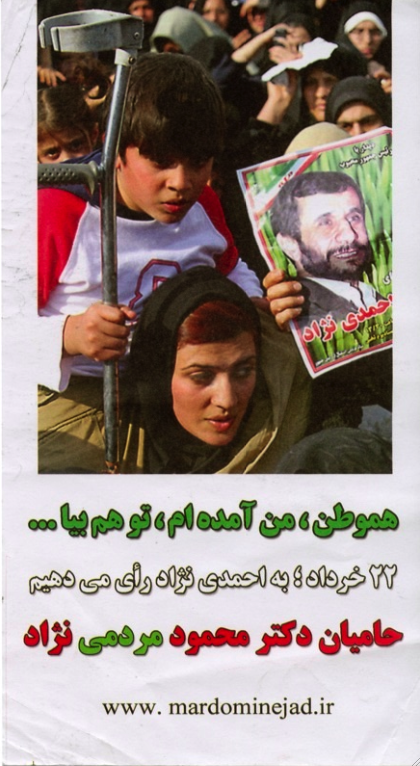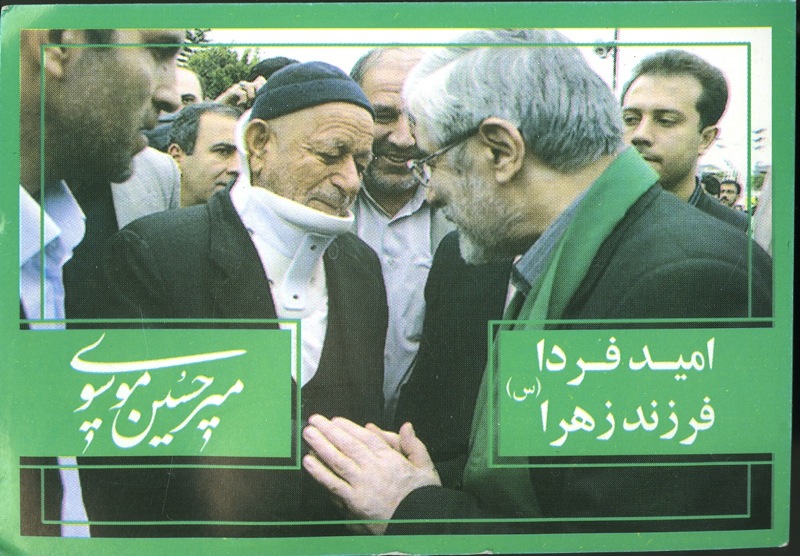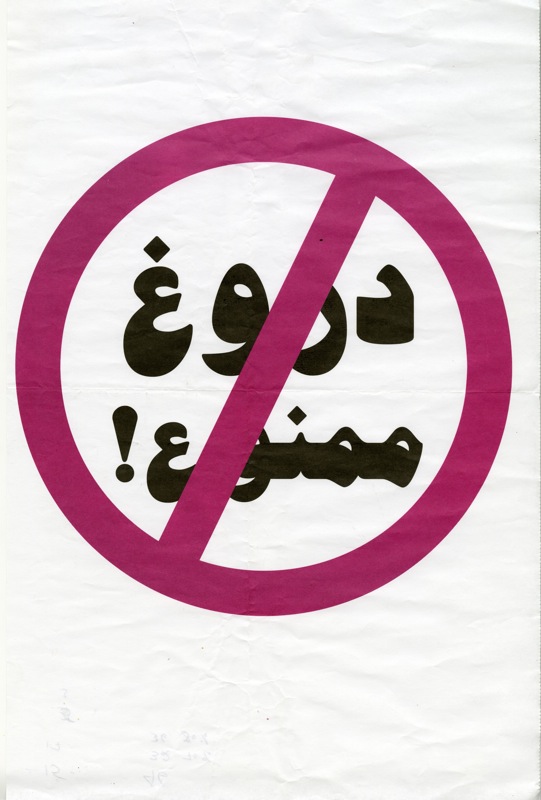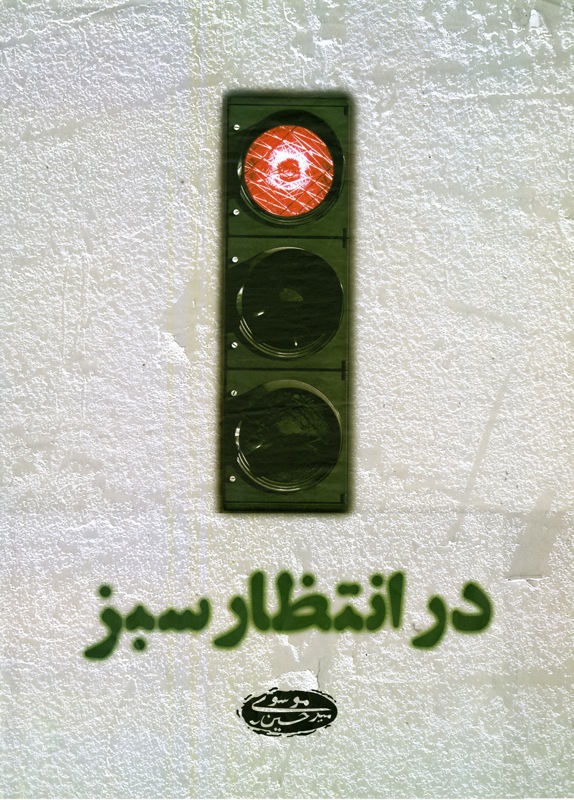Iran’s hotly contested 2009 presidential elections and its tumultuous aftermath have been a source for numerous op-eds, policy speeches, and activist events from Tehran to New York and everywhere in between--to this day.
The mass protests and violence that followed the announcement of Ahmadinejad’ s victory overtook the several weeks of campaigning that preceded the June 12 elections that brought 85% of the electorate to the ballot boxes. One of the vehicles for expressing the platforms of the candidates as well as inspiring voters were the colorful and ever-present election posters. While previous elections also included banners and posters as means for citizens to demonstrate their political views and candidates to disseminate their messages, Iran’s 10th presidential election saw an increase in significance and volume of visual and symbolic methods. Moreover, these posters hearken back to core themes or symbols of the Islamic revolution while also foreshadowing the deep cleavages exposed in the election and the conflicts in its aftermath.
Reaching out to the People
Mass participation and populism were hallmarks of the 1979 revolution that toppled the monarchy, and were critical to Khomeini’s ability to consolidate state power during the early years of the Iran-Iraq war. This theme continued to be noticeable in many of the 2009 election posters for all candidates. Unsurprisingly, Ahmedinejad utilized populist rhetoric and symbols just as he had since his 2005 successful presidential campaign. His campaign team went so far as to rename him Mardomi-Nejad, meaning “cut from the people’s cloth.” In poster 1, which uses a photograph of a disabled child at one of his rallies, Ahmadinejad is represented as the protector of the oppressed and “downtrodden,” a time-honored theme of the Islamic revolution. The caption reads: “Fellow Citizens, I have come[to the fore]. You come, too…[on] the 22nd of Khordad[Election day of 2009]; We will vote for Ahmadinejad. Support Doctor Mahmoud Mardomi-Nejad.” Intriguingly, despite the very clear populist message, the supporters of the current president emphasized Ahmadinejad’s title of “doctor” in order to remind voters that he holds a PhD in engineering and has technical expertise. Additionally, the young woman in the photograph appears to be wearing makeup and her veil is more revealing than not, contradicting the idea that his politics exclusively target a religiously conservative strata of Iranian society.

[Poster 1: "Support Doctor Mahmoud Mardomi - Nejad"]
Mir Hussain Mousavi, the leftist-influenced Prime Minister during the 1980s, also deemed it necessary to invoke images of his close rapport with “ordinary” Iranians. Poster 2 depicts Mir Hossein Mousavi speaking humbly to an elderly man in a neck brace. The caption simply reads: “The hope for tomorrow, the child of Zahra [granddaughter of the Prophet Mohammed].” On the one hand, his campaigners are referencing the reformist agenda for the future while reminding potential voters that Mousavi is a seyyid, or someone who claims descent from the Prophet Mohammed. This is reinforced by the campaign’s savvy use of the color green, which is associated with piety and the Prophet’s family.

[Poster 2: "The Hope for Tomorrow - The Child of Zahra"]
The Many Greens
Mousavi’s use of the color green also resonated among less religious Iranians for it symbolizes spring, rebirth and joy. Green was a reminder for more secular Iranians that Mousavi’s platform was a reformist departure from Ahmadinejad’s brand of social conservatism. Consequently, when protestors took to the streets to challenge the legitimacy of the election results as well as the violation of their civil and political rights, the “Green Movement” was born. Just as green was used before and after the election, other campaign themes were also adapted by Mousavi supporters in the contentious months following the election. For instance, the week before the election, Moussavi supporters printed posters that simply read “Lying is Forbidden” (poster 3). This referenced Ahmadinejad’s manipulation of economic statistics and exaggerations of his accomplishments in support of his candidacy. With the June 13 announcement of the results, these matter-of-fact posters took on even greater meaning for the so-called “Greens,” who viewed this outcome as fraudulent.

[Poster 3: "Lying is Forbidden"]
Despite much enthusiasm and possibly naïve optimism, by the winter, the critics of Ahmadinejad and the supporters of greater democratization in Iran were demobilized through coercion and the dismantling of their organizations. The Green movement’s dramatic rise and decline in the face of brutal repression has left many Iranians sympathizing with the slogan in campaign poster 4, which simply states: “waiting for green.”

[Poster 4: Waiting for Green]
*[A bumper sticker for Mehdi Karrubi`s candidacy reads "We Have Come For Change" and includes images of notable reformist politicians and activists.]
